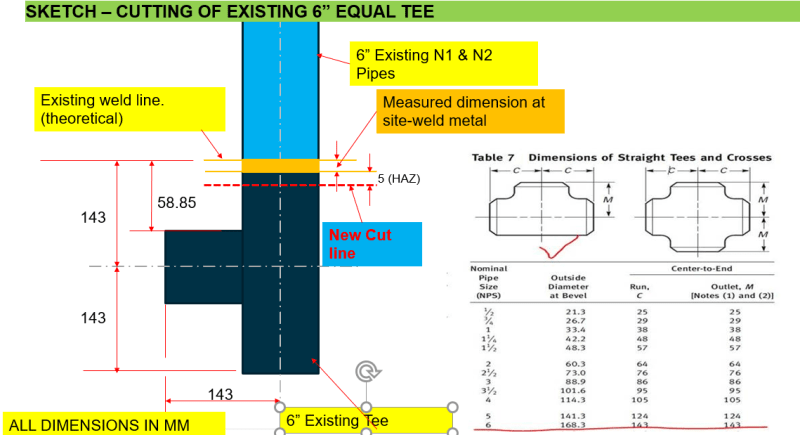ASDcunha
Materials
- Jul 20, 2021
- 2
On a particular job , because of space constraint, it was required to cut exiting 6" equal tee by 10mm on the "run length" of 143mm . Therefore this dimension was reduced from 143mm to 133 mm at site. This was for 150# rating line.
1) Is cutting of standard fittings(ASME B16.9) allowed?
2) how do you prove to Client that this design is acceptable?
3) what is maximum length that can be cut for a such standard fittings to be acceptable.
Refer attached

1) Is cutting of standard fittings(ASME B16.9) allowed?
2) how do you prove to Client that this design is acceptable?
3) what is maximum length that can be cut for a such standard fittings to be acceptable.
Refer attached

